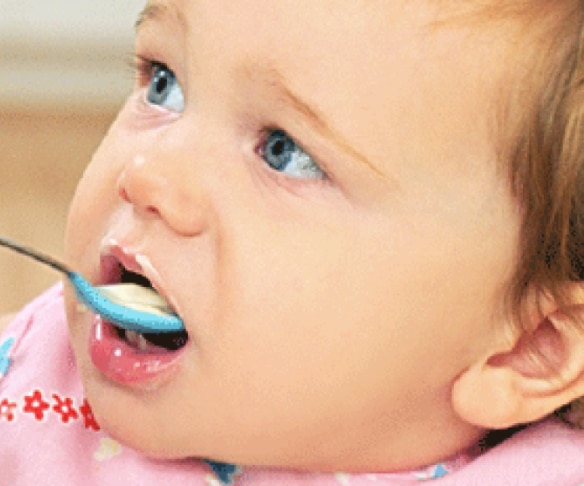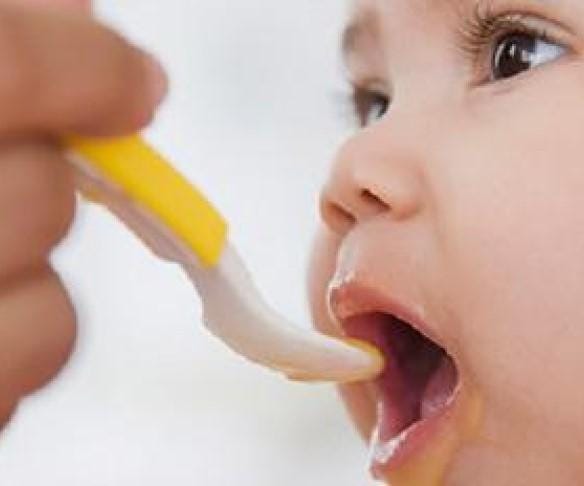Spoon Skills
Learning how to eat is a process full of twists, turns, and lots of baby food on their clothes—and sometimes yours. Your baby’s mouth muscles are getting stronger, they’re learning hand-to-mouth coordination and are becoming more aware of mealtimes, and with a little help they’ll soon be feeding themselves. But first they need to figure out how to successfully get the food off the spoon and into their mouths.
Mealtime looks fun to your baby and they’ll want to join in when they see you eat. Once your little one knows what the spoon is, they’ll open their mouth when they see it. They may want to hold the spoon, play with it or put it in their mouth, and they should. Handling the spoon in any way helps your baby learn to use other tools when they’re older, like crayons, pencils and scissors.
Your baby will start to recognize food and even their own utensils and plates, so finding a good routine for both of you will help make all of the new things a little easier to understand.
Tips for Successful Spoon-feeding
- Make sure your baby is supervised, sitting up and secured in a feeding or high chair.
- Use a soft, rubber-tipped spoon.
- Keep food either warm or cool; not extremely hot or cold. Always test the temperature of the food before feeding your baby.
- Pay attention to signs of your baby’s hunger and fullness so you know when to start and stop feeding.
- Start by guiding the spoon to their mouth together with your hand and your baby's both on the spoon.
- Allow them to handle and play with the spoon.
- Follow your baby’s lead. Give them time to taste and swallow their food before offering another spoonful.
Keep in Mind
Baby-food pouches are convenient when you and your little one are on the go. You can easily squeeze the baby food onto a spoon or bowl and give them time to practice and master spoon feeding, even away from home.
Bonding and Responsive Feeding
Mealtime is bonding time and the perfect moment to learn more about your baby’s appetite. You’ll find out if they’re adventurous, or cautious; hungry or full. All this will help you feed them in the way that suits them best. It’s called “responsive feeding,” and it sets them up for more healthy eating habits.
Some of Your Baby’s Fullness Cues Are:
- Turning their head away
- Pushing the spoon away
- Refusing to open their mouth
- Leaning away from the spoon
- Shaking their head “no”
- Spitting food out
Pushing your baby to eat more when they’re full can lead to overfeeding and unhealthy weight gain. It may also teach them to ignore their own tummies. The foods they eat will mostly depend on their personal development, which nobody knows better than you. Remember, each baby develops at their own pace, so follow their unique cues.
Learn more about your baby's hunger and fullness cues.
When to Start Feeding Your Baby Cereal
Around the middle of the first year babies may be ready for solid foods. Your baby is growing each and every day, so by the middle of the first year, their natural supplies of iron start to deplete. It may be time to introduce iron-fortified baby cereal, but check with your pediatrician first.
Once you and your baby’s doctor decide your little one is ready, you can choose developmentally appropriate foods to feed them. Iron-fortified, single grain infant cereal and single-fruit and vegetable baby food are good options.







